When configuration changes are made to an ERP system, the focus is on making business processes execute properly so that business needs are satisfied accordingly. But, there is always a needed change or enhancement that an ERP cannot accommodate. Software customizations can address these unanswered needs. Fortunately, E-Business Suite users and administrators can rely on Oracle APEX to quickly create applications with modern, Web-based interfaces. These meet EBS Business requirements and give users the ability to create some customizations of their own.
A Common Unanswered Need in EBS: Reports
Most common in E-Business Suite is the need for reports that exactly satisfy your requirements. It is common knowledge that standard EBS reports offer a minimum of information and flexibility. For example, if you want a simple list of your Suppliers Report, there is always that missing parameter or display field that you want. Wouldn’t be nice if as a user you determine that you want to add this extra field or filter on a new parameter? On top of that, waiting for the “concurrent” request to be done before finding out that you entered the wrong parameter should be a thing of the past.
This is where Oracle APEX can help. Like no other modern web-based tool, it allows you to use components which empower users to be more efficient in manipulating the data contained in your favorite ERP system. An APEX interactive report provides this ability while maintaining the report data integrity and user’s security. Since the interactive report results are displayed online in a graphical web environment, no need to wait for the “paper-based” report to come out.
Example of APEX-EBS Extension: Supplier Score Card
Here is a provisioning example. I am using one of our EBS-APEX demo applications called Supplier Score Card. Let’s say you’d like to offer one of your suppliers a long-term contract. You’d first want to check up on their performance in the last year. This example consists of a user dashboard with a few metrics: On-Time performance, Expense Trend (how much I’ve bought from them), and Expense Breakdown (expenses by item category). Here is an example including a fictitious supplier called Allied Manufacturing (from an EBS Vision instance).
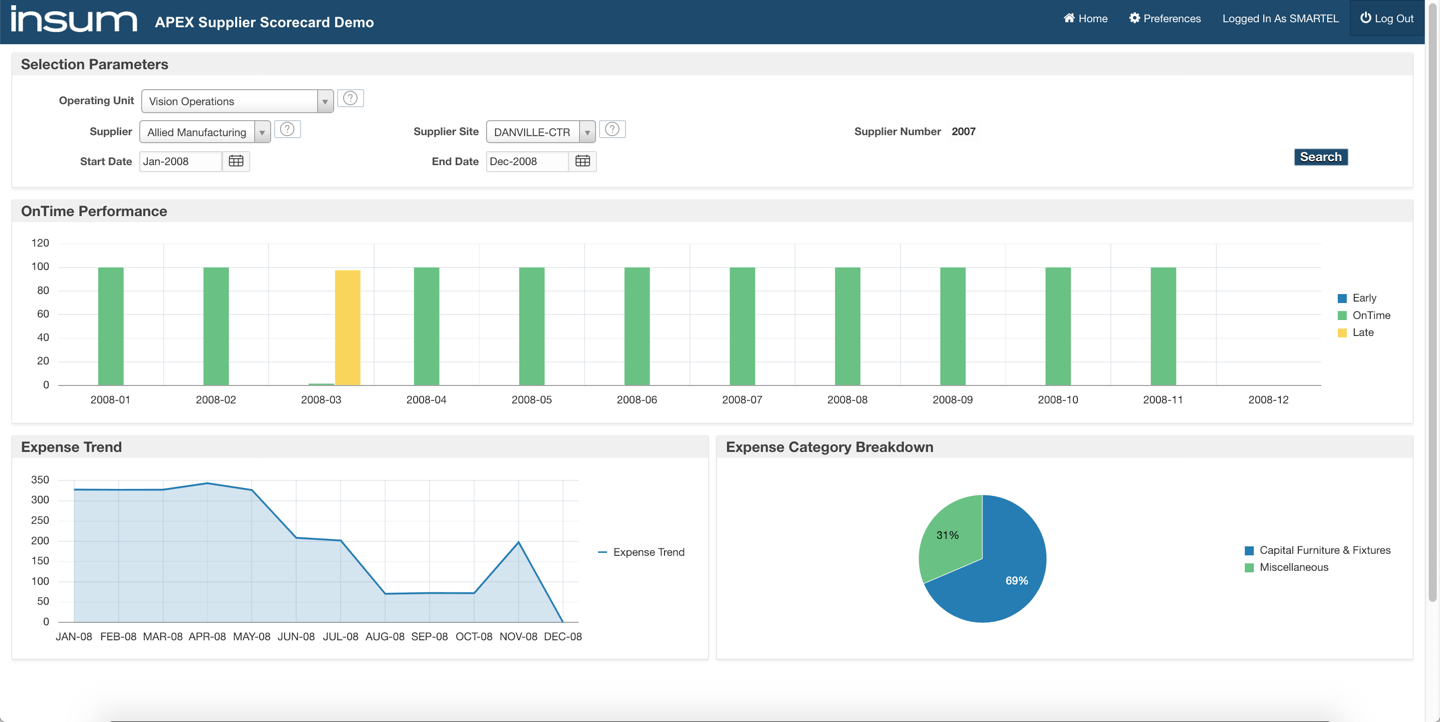
This dashboard provides a very nice overview of the situation related to this supplier over the last year.
Getting down into the metrics
What if I want to see more details relevant to one of the metrics displayed? For example, the different purchases in the expense category Capital Furniture & Fixtures.
By clicking on the pie chart segment of that metric, I can branch to a page with an interactive report. Here, I can drill down into the transactions that made the original value in the first page…
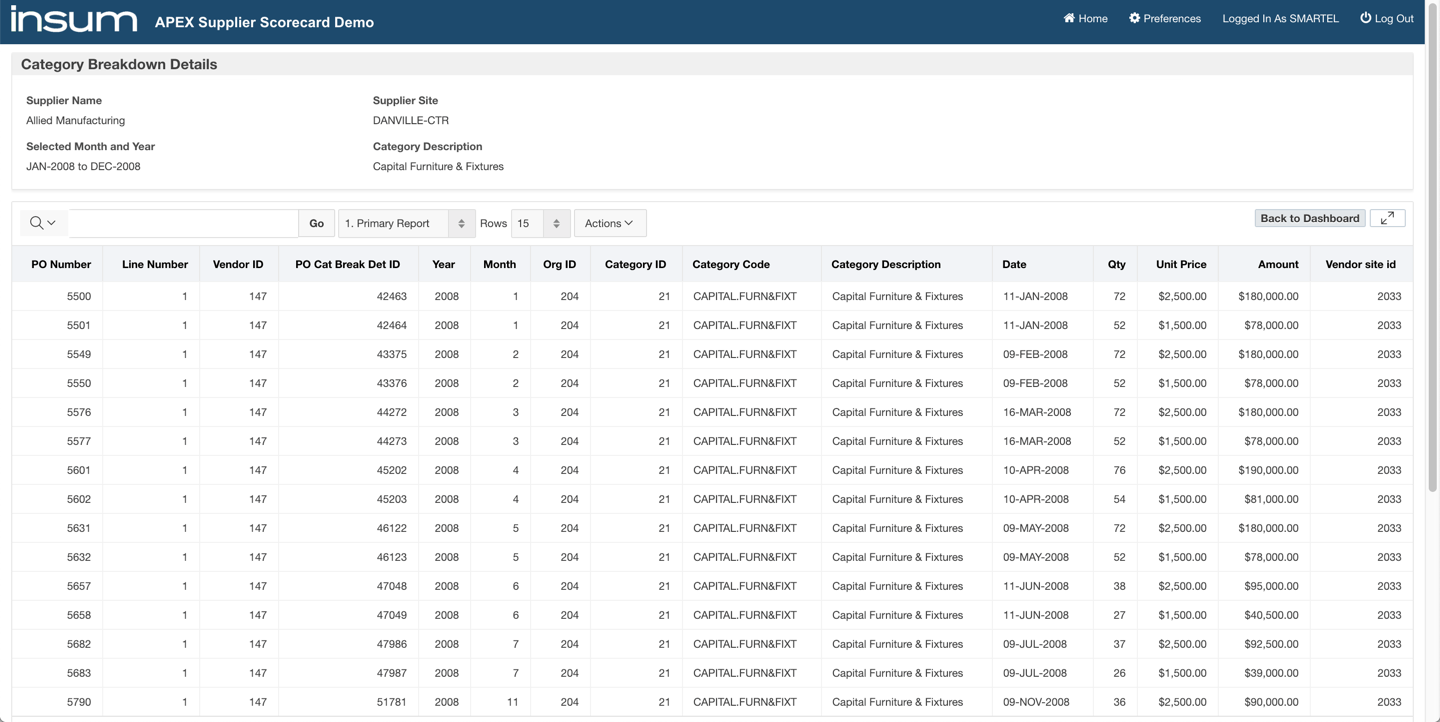
Now you would say, well that’s a nice report, and it’s giving me the details of this metric, but the programmer really only did his job and gave me all sorts of fields that I might not want all the time. How about providing myself with a basic view of this report? By choosing only the columns that I need, I can end up with my basic version of the same report. I can do this using the Actions button available in the Interactive Report component.
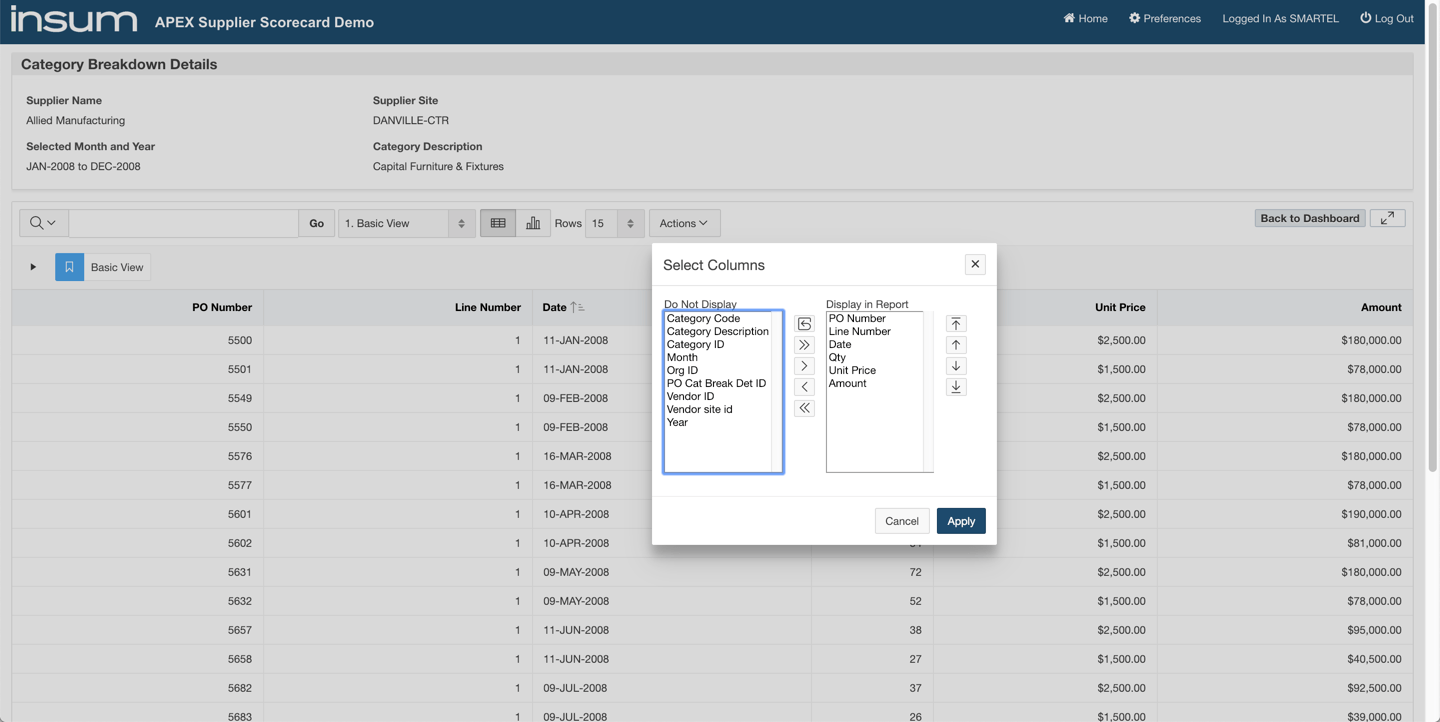
Well, that’s much better and less crowded. But say I’d like to quickly determine the bigger purchase amounts? for example, I’d like to highlight anything over 150,000$. By using another built-in feature of APEX interactive reports, I can easily highlight the transactions with an amount greater than 150,000$.
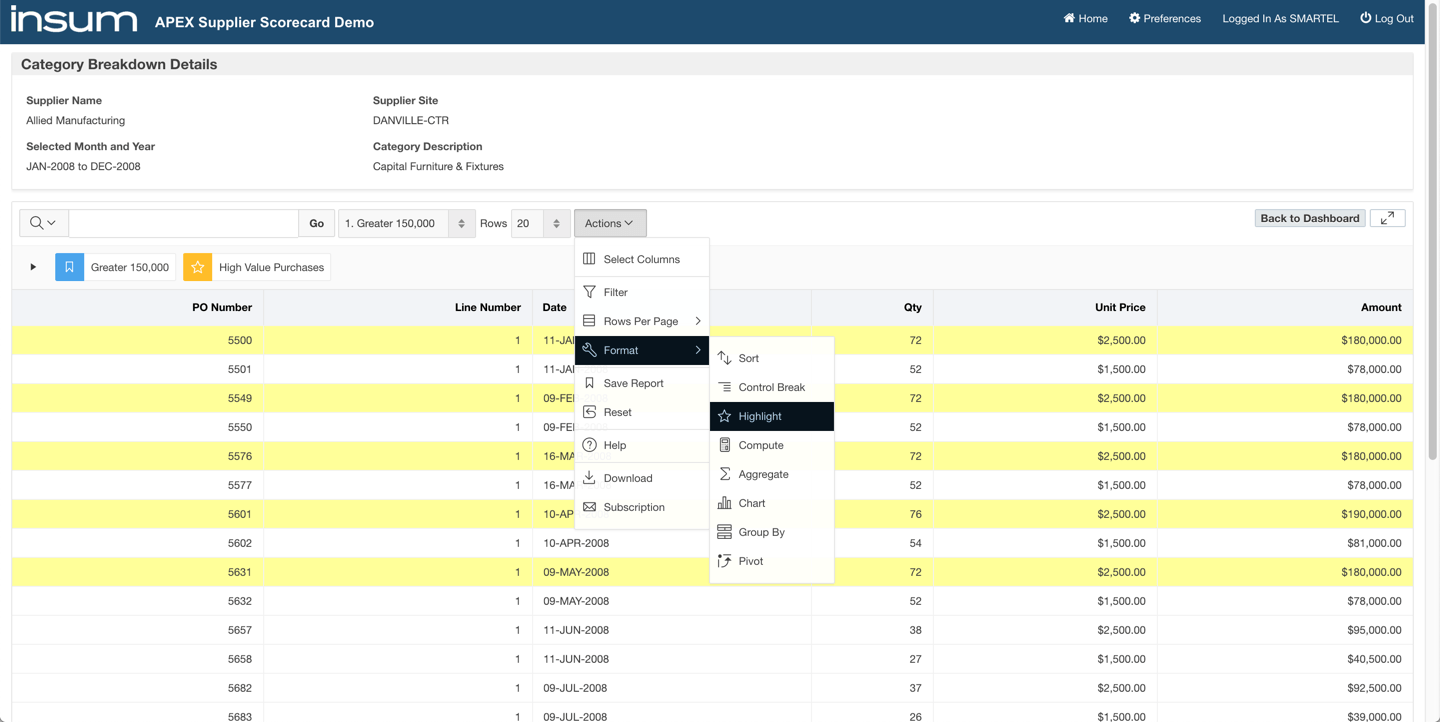
That’s pretty amazing! (and fun to do…) This is giving me great information. Now I’d like to see these transactions grouped by month. Once again as a user, I can go to the Actions button and use the Control Break feature to do just that.
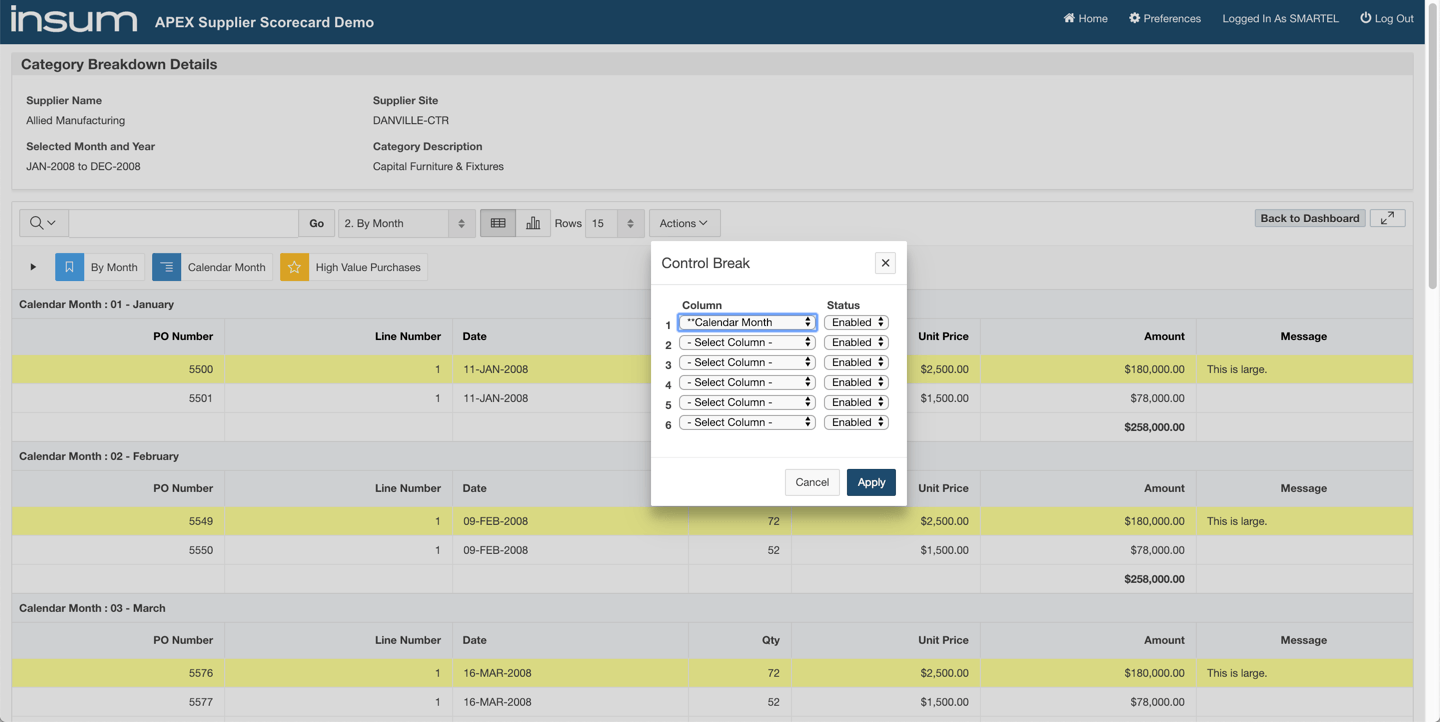
All of these reports can easily be saved and shared with other users as well.
Data Entry
Another significant source of needed customizations is data entry. There are some screens in EBS that can be cumbersome. Others may require capturing additional custom fields your organization might need.
Making sure all information is captured in a timely fashion in one transaction process directly into EBS by all users reduces the risk of forgetting to update a piece of paper or filling in an Excel spreadsheet on the side. Nobody wants that! This is why many companies benefit from simpler and more complete user interfaces to capture transactions for their users.
For example, at retailers, temporary staff, such as students, can perform physical inventory. This category of worker usually has a high turnover rate. It wouldn’t be realistic to expect them to learn the EBS screen to perform these tasks. APEX screen enables them to use a simple and intuitive interface.
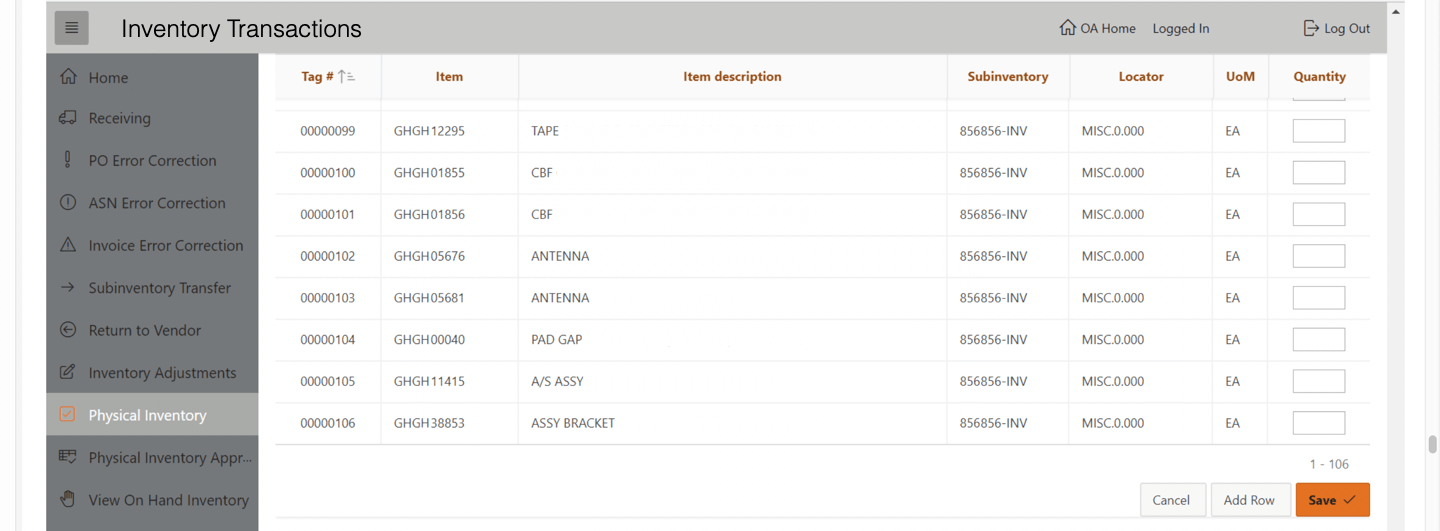
By the same token, approving transactions can be simplified greatly as we can see in this example:

Next: Web Services and the Cloud, with APEX
In my upcoming blog posts, I’ll talk about Web services and the Cloud. These technologies are opening up EBS installations to the future. As a 100% Web-based development platform, Oracle APEX enables EBS to consume and expose web services with surprising simplicity. When it comes to Cloud migration, whether you are choosing Fusion Applications or a straight “Lift and Shift” to an Oracle Infrastructure as a Service (IaaS), APEX is a highly useful tool. It can live just as well on-premise as on the Cloud. Consequently, any application built with it is a sound investment for the future. Want to learn more about how you, your developers, and your users can benefit from our APEX integration solutions? contact us!
Previously in this Series
APEX – A Well-Integrated Web-Based Oracle Tool for EBS Development
